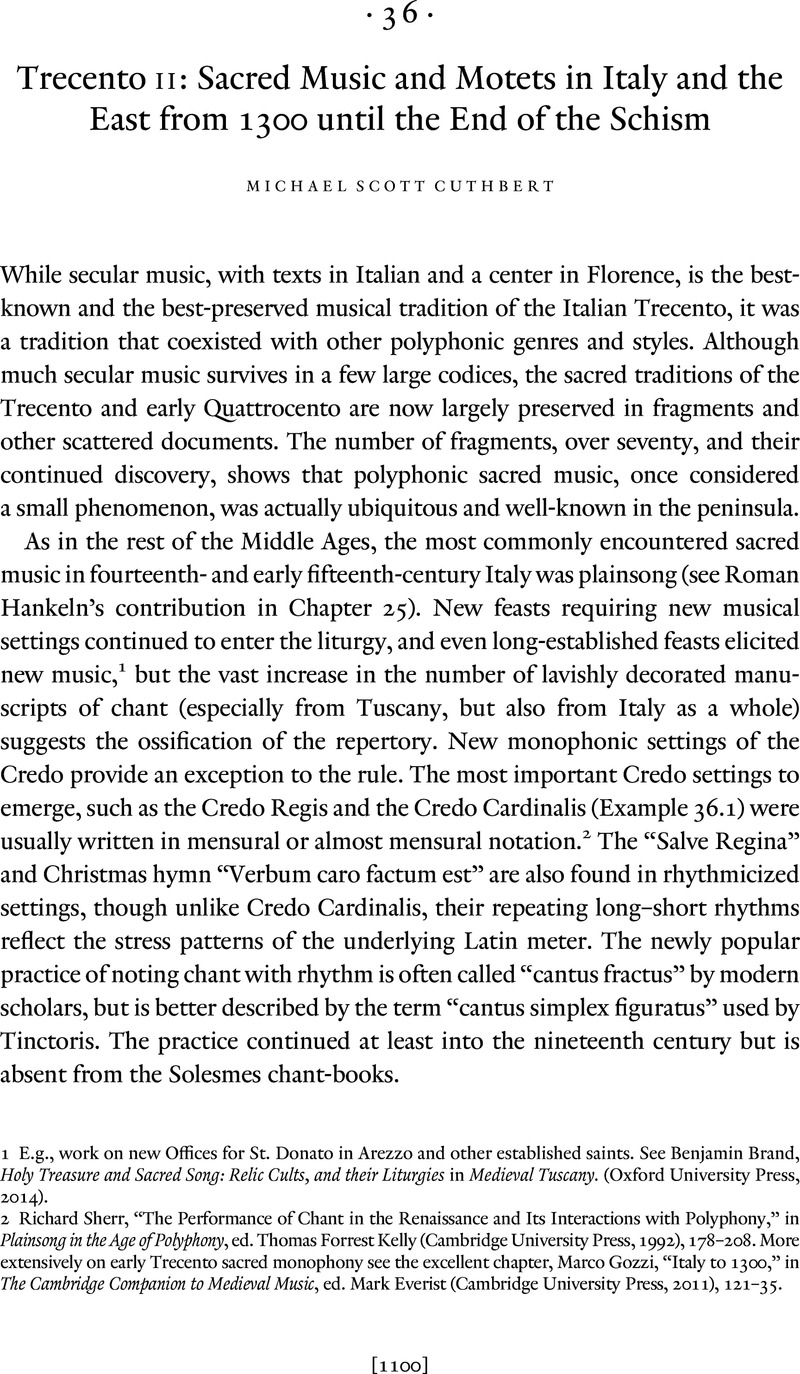Book contents
- The Cambridge History of Medieval Music
- The Cambridge History of Music
- The Cambridge History of Medieval Music
- Copyright page
- Contents
- Figures
- Music Examples
- Tables
- Notes on Contributors
- Acknowledgements
- Manuscript Sigla
- Abbreviations
- Volume I
- Volume II
- 21 Institutions and Foundations
- 22 Notation II
- 23 Rhythm and Meter
- 24 Tonal Organization in Polyphony, 1150–1400
- 25 Liturgy and Plainchant, 1150–1570
- 26 Early Polyphony
- 27 Notre Dame
- 28 Liturgical Polyphony after 1300
- 29 The Emergence of Polyphonic Song
- 30 Vernacular Song III: Polyphony
- 31 The Thirteenth-Century Motet
- 32 The Fourteenth-Century Motet
- 33 Latin Song I: Songs and Songbooks from the Ninth to the Thirteenth Century
- 34 Latin Song II: The Music and Texts of the Conductus
- 35 Trecento I: Secular Music
- 36 Trecento II: Sacred Music and Motets in Italy and the East from 1300 until the End of the Schism
- 37 Ars subtilior
- 38 Citational Practice in the Later Middle Ages
- 39 “Medieval Music” or “Early European Music”?
- Index
- References
36 - Trecento II: Sacred Music and Motets in Italy and the East from 1300 until the End of the Schism
from Volume II
Published online by Cambridge University Press: 04 August 2018
- The Cambridge History of Medieval Music
- The Cambridge History of Music
- The Cambridge History of Medieval Music
- Copyright page
- Contents
- Figures
- Music Examples
- Tables
- Notes on Contributors
- Acknowledgements
- Manuscript Sigla
- Abbreviations
- Volume I
- Volume II
- 21 Institutions and Foundations
- 22 Notation II
- 23 Rhythm and Meter
- 24 Tonal Organization in Polyphony, 1150–1400
- 25 Liturgy and Plainchant, 1150–1570
- 26 Early Polyphony
- 27 Notre Dame
- 28 Liturgical Polyphony after 1300
- 29 The Emergence of Polyphonic Song
- 30 Vernacular Song III: Polyphony
- 31 The Thirteenth-Century Motet
- 32 The Fourteenth-Century Motet
- 33 Latin Song I: Songs and Songbooks from the Ninth to the Thirteenth Century
- 34 Latin Song II: The Music and Texts of the Conductus
- 35 Trecento I: Secular Music
- 36 Trecento II: Sacred Music and Motets in Italy and the East from 1300 until the End of the Schism
- 37 Ars subtilior
- 38 Citational Practice in the Later Middle Ages
- 39 “Medieval Music” or “Early European Music”?
- Index
- References
Summary

- Type
- Chapter
- Information
- The Cambridge History of Medieval Music , pp. 1100 - 1124Publisher: Cambridge University PressPrint publication year: 2018



